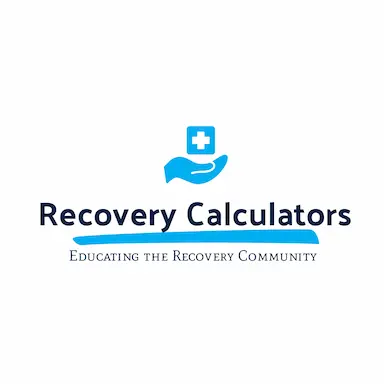Alcohol Detoxification Protocol: Safe Withdrawal & Recovery

Learn about safe alcohol detox protocols, withdrawal management, and recovery strategies for a healthier, sober future.
How to Stop Dry Heaving From Alcohol?

Struggling with dry heaving after drinking? Learn how to stop dry heaving from alcohol with these simple remedies and tips for quick relief.
Alcoholic Numbness: Causes, Symptoms, and Treatment

Learn about alcoholic numbness, its causes, symptoms, and treatment to manage this condition effectively.
How CIWA Helps Track Alcohol Withdrawal Symptoms

Alcohol withdrawal can be a challenging and sometimes dangerous process. It involves a range of physical and mental symptoms that need careful management to ensure safety. Fortunately, the Clinical Institute Withdrawal Assessment for Alcohol, known as CIWA, is a valuable tool that helps healthcare providers monitor and manage these symptoms effectively. The CIWA scale is widely used in clinics and rehabs to assess the severity of alcohol withdrawal symptoms. By providing a clear and consistent method for evaluation, CIWA helps medical professionals tailor treatment plans to each individual’s needs. This personalized approach can make a big difference in the journey toward recovery. Using CIWA not only helps in identifying the severity of withdrawal but also plays a crucial role in guiding treatment decisions. With this tool, doctors and nurses can determine the right level of care, ensuring patients receive the appropriate support during detox. Understanding how CIWA works and why it’s essential can empower anyone involved in the recovery process, paving the way for safer and more effective treatment. Understanding the CIWA Scale: What It Measures and Why It’s Important The Clinical Institute Withdrawal Assessment for Alcohol (CIWA) is a vital tool used worldwide to measure alcohol withdrawal symptoms. It comprises a series of questions and observations that help healthcare providers assess the severity of withdrawal in a person attempting to stop drinking. The CIWA scale is essential because withdrawal symptoms can range from mild discomfort to life-threatening complications. It measures ten specific symptoms, each assigned a severity score. These symptoms include nausea and vomiting, tremors, paroxysmal sweats, anxiety, agitation, tactile disturbances, auditory disturbances, visual disturbances, headache, and the clear presence of orientation and clouded sensorium. Each symptom is rated, and the total score gives a comprehensive picture of the patient’s withdrawal state. The CIWA scale is important because it provides a standardized method to assess symptoms, enabling healthcare teams to deliver appropriate care. By using CIWA, medical professionals can decide the level of medical intervention necessary. A higher score may indicate the need for medications to manage severe symptoms, while a lower score might suggest that less intensive observation is sufficient. This helps in preventing complications and ensuring that the patient undergoes a safer detox process. The scale’s ability to guide individualized care makes it a cornerstone in the treatment of alcohol withdrawal syndromes. Step-by-Step Guide: Using CIWA to Monitor Withdrawal Symptoms Using the CIWA scale involves a systematic approach to efficiently monitor alcohol withdrawal symptoms. Here’s how it works: 1. Patient Observation: Begin with a calm environment to assess the patient without distractions. Observe the patient for any signs of nausea, tremors, and sweating. 2. Checklist Assessment: Go through the ten symptoms outlined in the CIWA protocol. Ask the patient about their experiences with symptoms like anxiety, visual or auditory disturbances, and whether they feel agitated. 3. Symptom Rating: For each symptom, rate its severity on a scale from 0 (not present) to 7 (extreme). Write down each score to calculate the total. 4. Score Calculation: Add up the scores from each symptom to get the total CIWA score. This total will range from 0 to a maximum of 67. 5. Care Decision: Use the CIWA score to decide on the treatment plan. For example, a score of 8 or less usually means minimal withdrawal, while a score above 15 may require medication. 6. Regular Monitoring: Repeat this assessment regularly, often every few hours, to track changes and adjust treatments as needed. Following these steps with the CIWA scale ensures thorough monitoring and helps healthcare providers make timely decisions for safe and effective withdrawal management. This structured method is crucial, especially in settings like luxury rehabs or Scottsdale rehabs, where personalized care is a priority. Benefits of Using CIWA During Detox and Rehab The CIWA scale is immensely beneficial during detox and rehab, providing clear advantages in patient care. Firstly, it offers detailed insight into withdrawal symptoms, helping professionals manage the detox process more effectively. By quantifying symptoms, CIWA allows for precise medication adjustments. This means patients receive only what they need, minimizing the risk of overmedication. Moreover, the CIWA tool enhances safety during alcohol withdrawal. Severe symptoms can be life-threatening without proper assessment and intervention. By using CIWA, healthcare providers can quickly identify when a patient’s symptoms escalate, allowing for swift and appropriate medical responses. This proactive approach reduces complications and helps prevent the progression to severe withdrawal forms, such as delirium tremens. Additionally, the scale fosters a personalized care approach. Each patient experiences withdrawal differently, and CIWA captures these variations. This personalization is especially valued in luxury rehabs and tailored treatment settings, ensuring a more comfortable and supportive recovery experience. Plus, regular use of CIWA helps assess the effectiveness of treatment strategies, guiding adjustments to optimize patient outcomes. Overall, incorporating CIWA in detox and rehab contributes to safer, more efficient alcohol withdrawal management. Comparing CIWA with Other Tools: Why It Stands Out in Alcohol Withdrawal Management The CIWA scale stands out among other tools used for alcohol withdrawal management due to its specificity and comprehensive nature. While there are various assessment tools like the COWS (Clinical Opiate Withdrawal Scale) and SMAST (Short Michigan Alcoholism Screening Test), CIWA is uniquely tailored for alcohol withdrawal. Unlike COWS, which measures opiate withdrawal symptoms, CIWA zeroes in on those associated with alcohol. This specific focus ensures that each symptom of alcohol withdrawal is thoroughly examined. SMAST is more of a screening test for identifying potential alcohol use issues rather than monitoring withdrawal severity. Therefore, CIWA provides the depth of assessment required during active withdrawal. Furthermore, CIWA is widely used due to its structured format that accommodates various healthcare settings, from drug rehabs to alcohol rehabs, including luxury and Scottsdale facilities. Its simplicity enables healthcare providers, even those with limited access to sophisticated technology, to effectively monitor and manage patients. This broad applicability, combined with robust data collection, makes CIWA a preferred choice for consistently delivering quality care. As a practical, proven method, CIWA continues to be a leading tool
Alcohol Withdrawal Guidelines: Managing Alcohol Withdrawal

Following the right alcohol withdrawal guidelines can prevent complications. Learn what to expect and how to handle alcohol withdrawal safely.
Alcohol Scale: Discover the Types of Alcohol Scale

Understand the alcohol scale and how it measures the strength of different beverages. Learn about ABV, its proof, and its effects on consumption.
Alcoholic Nose: Discover the Causes of Rhinophyma

What Is Alcoholic Nose? Learn about rhinophyma, its causes, symptoms, and whether alcohol consumption is truly linked to this skin condition.
Concerta and Alcohol: Dangers of Alcohol and Concerta Mix

Is it safe to drink alcohol while taking Concerta? Discover the dangers, interactions, and possible side effects of mixing Concerta and alcohol.
Oxycodone and Alcohol: Risks, Dangers, and Safety Tips

Discover the risks of combining oxycodone and alcohol, including dangerous interactions, side effects, and overdose hazards. Stay informed with key safety tips.
SMAST: A Deep Dive into Its Role in Alcoholism Screening

When it comes to understanding and addressing alcoholism, the tools we use can make a significant difference in outcomes. One such tool is the Short Michigan Alcoholism Screening Test (SMAST), a method developed specifically to screen for signs of alcohol dependency and abuse. At the heart of our efforts is the commitment to utilize best practices and reliable methodologies to guide individuals on their journey toward recovery. SMAST offers a structured approach to detecting alcohol-related issues, providing us with crucial insights that influence both diagnosis and treatment planning. SMAST’s effectiveness stems from its targeted questionnaire format, which delves into the behavioral consequences and emotional responses associated with alcohol consumption. By accurately interpreting these responses, we are better equipped to engage with clients about their experiences and challenges. This tool allows us to approach sensitive topics with empathy and precision, ensuring that each individual feels supported and understood. Utilizing SMAST not only enhances our screening processes but also reinforces our dedication to providing comprehensive care tailored to the unique needs of those we serve. It is a cornerstone in our array of resources aimed at fostering successful recovery outcomes. What Is SMAST and How Does It Work? The Short Michigan Alcoholism Screening Test (SMAST) is a diagnostic tool developed specifically to identify symptoms of alcohol abuse and dependency. This self-administered questionnaire consists of several pointed questions designed to provoke honest reflection about behaviors and feelings related to alcohol use. The questions are structured to reveal not only the frequency and quantity of alcohol consumption but also the psychological and social impact of alcohol on an individual’s life. We utilize SMAST because its focus on psychological criteria offers a deeper insight into the habitual aspects of an individual’s alcohol use. Each response is scored, and the total score determines the potential degree of alcoholism, guiding us toward appropriate intervention strategies. This tool is indispensable in our toolbox as it aids us in tailoring conversations and treatment plans that address specific needs, paving a smoother path toward recovery. The Benefits of Using SMAST in Alcoholism Screening Employing SMAST in our screening processes has several benefits that enhance both our understanding and treatment of alcohol-related issues. Firstly, its concise nature allows us to quickly assess a client’s alcohol use without overwhelming them with a lengthy questionnaire. This swift assessment helps in maintaining a comfortable environment where clients are more likely to be candid about their alcohol consumption habits. Moreover, SMAST’s targeted approach helps in identifying specific problematic behaviors associated with alcohol abuse. This specificity enables us to intervene effectively at an early stage, potentially preventing further psychological and physical health problems associated with chronic alcohol use. By understanding these behaviors, we can implement customized therapeutic responses that resonate more deeply with the individual’s experiences, enhancing the overall efficacy of our rehabilitation programs. This precision not only fosters a better understanding but also promotes a more sustainable recovery by addressing the root causes of alcohol misuse in our clients. Comparing SMAST with Other Screening Tools When we evaluate the effectiveness of SMAST (Short Michigan Alcoholism Screening Test), it’s imperative to compare it with other widely-used screening tools like the AUDIT (Alcohol Use Disorders Identification Test) and the CAGE questionnaire. SMAST is uniquely beneficial due to its focus on both the behavioral and psychological components of alcohol abuse, which offers a comprehensive view of an individual’s alcohol-related issues. Unlike the CAGE, which only has four questions focused more on the consequences of drinking, SMAST’s questions help us understand behaviors that hint at deeper, sometimes hidden, alcohol-related problems. Furthermore, while the AUDIT is useful for screening a broader spectrum of alcohol problems across different populations, SMAST provides a more direct approach tailored specifically towards identifying symptoms of alcohol dependence in clinical settings. This makes SMAST an invaluable tool in our toolbox, allowing for targeted assessments that ensure specialized care for our clients. Its effectiveness in clinical environments highlights its adaptability and precision in tackling alcoholism within diverse groups. Implementing SMAST in Various Rehab Settings Implementing SMAST effectively across various rehab settings involves a strategic approach that considers the unique environment and clientele of each facility. In luxury rehab settings, for instance, where privacy and individualized attention are paramount, SMAST helps clinicians develop personalized treatment plans that address the specific needs and circumstances of high-profile clients. This is crucial in fostering an atmosphere of trust and tailored care. In more general drug and alcohol rehab facilities, SMAST’s versatility allows it to be integrated into a broad range of treatment protocols, from initial assessment stages to monitoring progress during recovery. By utilizing SMAST across different settings, we ensure a consistent and reliable baseline for evaluating alcohol dependency, enhancing the overall quality of care and supporting sustainable recovery outcomes. Conclusion At Recovery Calculators, we are committed to empowering our clients and their families through effective addiction recovery tools and education. Understanding and utilizing SMAST in our assessments underscores our dedication to providing accurate, compassionate, and tailored care. Whether you’re beginning your journey toward recovery or seeking support for a loved one, our tools like SMAST, coupled with our expert guidance, ensure that you receive the understanding and treatment you deserve. Contact us today to learn how we can help you or your loved one take the first step toward a lasting recovery. Your journey to a healthier life starts here, with us.

